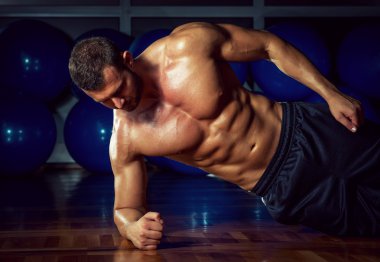
Best Core Exercises For Athletes (6 Helpful Exercises)
Best core exercises for athletes are essential for building strength, stability, and endurance. They not only enhance performance but also reduce the risk of injury by fortifying the muscles that support the spine and pelvis. Incorporating these exercises into training routines can lead to improved balance, power, and overall athletic ability.
Building a powerful core is the secret weapon behind every elite athlete’s performance, driving explosive strength, balance, and agility. Whether you’re sprinting down the field, powering through a swim, or launching into the air for a perfect dunk, the core is your body’s powerhouse. Discover the best core exercises that will not only sculpt rock-solid abs but also enhance your athletic performance, turning you into a force to be reckoned with in any sport. Get ready to unlock the potential of your core like never before!
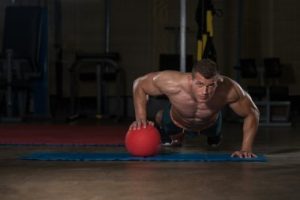
Best Core Exercises For Athletes
The best core exercises for athletes include planks, Russian twists, medicine ball slams, hanging leg raises, and bicycle crunches. These exercises enhance stability, improve balance, and boost overall athletic performance. Incorporating them into your routine can prevent injuries and elevate your game.
Importance of Core Strength for Athletes
Core strength is fundamental for athletes, providing the stability and power necessary for peak performance. A strong core supports every movement, from running to jumping, helping athletes maintain balance and control.
How Core Exercises Enhance Athletic Performance
Core exercises are more than just a way to sculpt abs—they are crucial for enhancing athletic performance. When athletes perform core exercises like planks, Russian twists, and hanging leg raises, they are not only strengthening their muscles but also improving their ability to control and stabilize their bodies during high-intensity activities. This improved control reduces the risk of injuries, such as sprains and strains, which are common in sports that involve sudden changes in direction or intense physical contact.
Moreover, a strong core is essential for transferring energy from the lower body to the upper body, which is critical in sports like basketball, football, and track and field. For example, a powerful core can help a sprinter explode off the blocks, or a basketball player jump higher and land more safely.
Core Functionality in Different Sports
Core in Running and Sprinting
In running and sprinting, the core muscles—especially the abdominals, obliques, and lower back—help maintain posture, reduce excessive movement, and transfer energy efficiently through the body. A strong core allows runners and sprinters to generate more force with each stride, maintain proper alignment, and reduce the risk of injury. Whether it’s stabilizing the pelvis or controlling rotational movements, the core is essential for optimizing speed, endurance, and overall performance in these activities.
Core in Contact Sports (e.g., Football, Rugby)
In contact sports, the core muscles, including the abdominals, obliques, and lower back, provide stability and power during physical collisions and rapid changes in direction. A strong core enhances balance and helps absorb impacts, reducing the risk of injury. It also contributes to explosive movements like tackling, sprinting, and jumping, which are essential in these high-intensity sports. By maintaining a stable and strong core, athletes can perform at their best while protecting themselves from the physical demands of contact sports.
Core in Sports Requiring Rotational Movements (e.g., Golf, Baseball, Tennis)
In sports that require rotational movements, such as golf, baseball, and tennis, core functionality plays a crucial role in generating power, stability, and precision. The core muscles, including the abdominals, obliques, and lower back, are responsible for transferring force between the upper and lower body, enabling powerful and controlled rotational movements. A strong and well-conditioned core helps athletes maintain balance during complex motions, optimize energy transfer, and reduce the risk of injury. Whether swinging a golf club, hitting a baseball, or serving in tennis, the core’s ability to stabilize and rotate efficiently is key to athletic performance.
Core in Endurance Sports (e.g., Swimming, Cycling)
In endurance sports like swimming and cycling, a strong core plays a pivotal role in maintaining proper posture, reducing fatigue, and enhancing overall performance. In swimming, the core stabilizes the body, ensuring efficient strokes and reducing drag in the water. For cyclists, a strong core supports the spine, allowing for a more aerodynamic position and efficient transfer of power from the legs to the pedals. By strengthening the core, athletes can improve endurance, prevent injuries, and optimize their performance in these demanding sports.
Best Core Exercises for Athletes
Anti-Extension Exercises
Plank Variations
For athletes, maintaining a strong and stable core is crucial for optimal performance and injury prevention. Anti-extension exercises, such as various plank variations, are highly effective in achieving this. The standard plank is a fundamental exercise that targets the entire core, including the rectus abdominis, obliques, and lower back muscles. It involves holding a position where the body forms a straight line from head to heels, with weight supported on the forearms and toes.
For added challenge, athletes can incorporate side planks, which focus on the obliques and help improve lateral stability. In a side plank, the body is supported on one forearm and the side of one foot, with the other foot stacked on top and the body forming a straight line from head to heels.
Another advanced variation is the plank with shoulder taps, which involves holding a plank position while alternately tapping each shoulder with the opposite hand. This variation not only engages the core but also enhances shoulder stability and coordination. These exercises, when combined, provide a comprehensive core workout that enhances strength, stability, and overall athletic performance.

Dead Bug
The Dead Bug is a highly effective core exercise for athletes, providing exceptional benefits for stability and strength. This exercise involves lying on your back with arms extended toward the ceiling and legs lifted with knees bent at 90 degrees. As you extend one leg out straight while simultaneously lowering the opposite arm behind your head, the key is to maintain a stable, neutral spine and avoid arching your lower back.
This movement challenges the core muscles to stabilize the body against the opposing forces, enhancing overall control and coordination. For added intensity and variety, athletes can incorporate variations such as extending both legs and arms simultaneously or using a resistance band or stability ball. Advanced modifications might include performing the exercise on an unstable surface like a BOSU ball or adding a weighted vest for increased resistance. By integrating these variations, athletes can target different aspects of core strength and stability, ultimately improving their performance in dynamic and demanding sports scenarios.
Ab Wheel Rollouts
Ab wheel rollouts are a highly effective core exercise, especially beneficial for athletes looking to build strength and stability in their abdominal muscles. To perform this exercise correctly, start by kneeling on the floor with an ab wheel in front of you. Grip the handles firmly, engage your core, and slowly roll the wheel forward while extending your body. Maintain a straight line from your head to your knees, avoiding sagging in your lower back.
As you roll forward, focus on controlling the movement and resisting the urge to let your hips drop or your back arch excessively. Once you reach the maximum extension, engage your core muscles to pull the wheel back towards your starting position. To progress with ab wheel rollouts, start with partial range of motion if you’re new to the exercise, rolling out only a few inches before returning to the start. Gradually increase the range as you build strength and stability. Additionally, incorporating a variety of core exercises alongside ab wheel rollouts, such as planks and hanging leg raises, can further enhance overall core strength and functional performance for athletic endeavors.
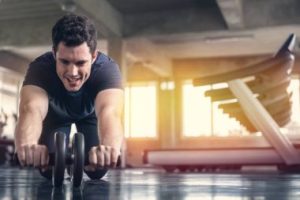
Anti-Rotation Exercises
Pallof Press
For athletes, developing a robust core is essential for enhancing performance, stability, and injury prevention. Among the most effective core exercises are anti-rotation exercises, with the Pallof Press standing out as a premier choice. The Pallof Press involves resisting rotational forces, which strengthens the muscles responsible for stabilizing the spine and pelvis. In the standing variation, athletes stand with feet hip-width apart and a resistance band or cable anchored to one side. They press the handle or band straight out from their chest while maintaining a rigid torso, resisting the pull of the band.
This movement targets the obliques, transverse abdominis, and other stabilizing muscles, enhancing overall core stability. The half-kneeling variation, performed with one knee on the ground and the other foot planted in front, adds an element of balance and engages the core more deeply. The kneeling variation, where both knees are on the ground, shifts the focus slightly, making it a great option for those needing to reduce the load on their lower body while still challenging their core.
Cable or Band Rotations
For athletes aiming to enhance core strength and stability, incorporating cable or band rotations into their training routine can be incredibly beneficial. These exercises, including standing rotations and woodchoppers, focus on developing rotational power and stability, which are crucial for many sports. Cable or band rotations involve attaching a resistance band or cable to a stationary object and performing controlled rotational movements.
By standing perpendicular to the anchor point and rotating your torso, you engage the obliques, rectus abdominis, and lower back muscles, which helps improve your overall core strength and rotational power. Woodchoppers, on the other hand, mimic the chopping motion of a lumberjack, involving a diagonal movement that engages both the upper and lower parts of the core. This exercise not only enhances core stability but also improves functional strength and coordination. By regularly incorporating these exercises, athletes can better prepare their bodies for the demands of their sport, reducing the risk of injury and improving overall performance.

Landmine Rotations
Landmine rotations are an excellent core exercise for athletes aiming to enhance rotational power and core stability. By utilizing a landmine setup, athletes can incorporate resistance into their rotational movements, increasing the challenge and effectiveness of the exercise. To perform landmine rotations, position a barbell in a landmine attachment and hold one end of the barbell with both hands. With your feet shoulder-width apart and knees slightly bent, engage your core and rotate your torso away from the barbell, allowing the weight to move in a controlled arc.
This movement targets the obliques, rectus abdominis, and the transverse abdominis, while also improving hip and shoulder stability. The added resistance from the barbell intensifies the exercise, making it a potent tool for developing strength and endurance in the core. By regularly incorporating landmine rotations into their training regimen, athletes can enhance their performance across various sports, as this exercise mimics the rotational forces encountered during dynamic athletic movements.
Anti-Lateral Flexion Exercises
Side Plank Variations
This exercise involves assuming a side plank position while incorporating additional challenges such as leg lifts or weighted variations. The standard side plank engages the obliques and transverse abdominis, but by adding leg lifts, athletes can intensify the workout and further activate the hip abductors and stabilizers.
For even greater resistance and muscle engagement, incorporating weights—such as holding a dumbbell or using a weighted vest—can significantly enhance the exercise’s difficulty. This not only strengthens the core but also improves muscular endurance and functional strength, which are essential for athletic performance. These variations help athletes build a robust core capable of stabilizing the body during dynamic movements, reducing the risk of injury, and optimizing overall performance.
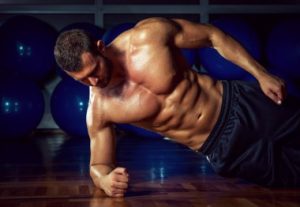
Farmer’s Walk
The Farmer’s Walk is an outstanding core exercise for athletes, emphasizing both strength and stability while challenging endurance. This exercise involves carrying heavy weights in each hand while walking a designated distance or for a set period. By incorporating Single-Arm Carries, athletes can further enhance their core stability and anti-lateral flexion capabilities.
Single-Arm Carries involve holding a weight in one hand while walking, which forces the core muscles to engage more intensely to resist the lateral flexion and maintain an upright posture. This unilateral approach helps to balance out strength discrepancies between sides of the body and enhances overall functional stability. Together, these exercises build not only the muscles of the core but also improve grip strength, posture, and overall resilience, making them invaluable for athletes who require dynamic and robust core performance in their sports.
Suitcase Deadlift
The Suitcase Deadlift is a powerful core exercise for athletes that targets both the posterior chain and the stabilizing muscles of the core. This exercise involves lifting a weight, typically a dumbbell or kettlebell, from the ground with one arm while keeping the other arm free. The primary challenge of the Suitcase Deadlift is its ability to resist lateral flexion, or the sideways bending of the spine, which is essential for athletes who need to maintain stability and balance during dynamic movements.
As you lift the weight, your core must engage intensely to prevent your torso from tilting, mimicking the demands placed on your body during various athletic activities. This single-arm deadlift enhances unilateral strength and stability, addressing muscle imbalances and improving overall functional strength.
Rotational Core Exercises
Russian Twists
For athletes seeking to enhance their performance, focusing on core stability and strength is crucial, and rotational core exercises are particularly effective in this regard. Among these, Russian Twists stand out as a powerhouse move for developing rotational strength and power. To perform Russian Twists, sit on the floor with your knees bent and feet flat, lean back slightly, and engage your core. Holding a weight or medicine ball, twist your torso to one side, then return to the center and twist to the opposite side.
This exercise targets the obliques and improves the ability to generate force during rotational movements. To increase the challenge, variations can include using heavier weights or medicine balls, or performing the twists with your feet elevated to engage the core even more intensely. For athletes, incorporating these variations into their training regimen can lead to better balance, agility, and overall performance, as they train not only the core muscles but also the coordination and control required for explosive, multi-directional movements.
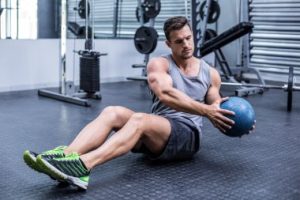
Medicine Ball Rotational Throws
Medicine ball rotational throws are an exceptional core exercise for athletes looking to enhance their rotational power and overall stability. These dynamic movements involve using a medicine ball to perform throws while rotating your torso, which engages multiple core muscles, including the obliques, rectus abdominis, and transverse abdominis.
One effective variation is the partner throw, where athletes stand facing each other and throw the medicine ball back and forth with a rotational motion. This exercise not only strengthens the core but also improves coordination and timing. Another variation is the wall throw, where athletes stand a few feet away from a wall and throw the medicine ball against it, catching it on the rebound.
Cable or Band Rotational Pulls
For athletes aiming to enhance their core strength, cable or band rotational pulls are an excellent exercise choice, as they effectively target the oblique muscles and improve rotational power. By adjusting the angle of the cable or band, athletes can tailor the exercise to better suit their sport-specific needs.
For instance, setting the cable or band to a lower angle engages the core in a way that mimics the rotational movements often required in sports like baseball or tennis, where powerful twisting motions are essential. Conversely, a higher angle can shift the focus to different parts of the core, potentially benefiting sports that involve overhead movements. Varying the resistance allows for progressive overload, which is crucial for building strength and endurance.
Dynamic Stability Exercises
Turkish Get-Up
The Turkish Get-Up is an exceptional core exercise for athletes, emphasizing dynamic stability and functional strength. This exercise involves a multi-step movement pattern that challenges the core, improves coordination, and enhances overall body control. To perform the Turkish Get-Up, begin by lying on your back with one arm extended toward the ceiling, holding a weight (such as a kettlebell) in that hand. Bend the knee of the same side and place the foot flat on the ground while keeping the opposite leg extended straight.
Start by pushing through the heel of the bent leg to lift your torso off the ground, rolling onto your elbow while keeping your gaze on the weight. From this position, press up to a seated position, then move into a kneeling stance by shifting your weight and driving the rear knee forward. Next, transition into a lunge position, ensuring the front knee is directly over the ankle and the torso remains upright. Finally, stand up fully by driving through the front foot and bringing the back leg forward. To reverse the movement, step back into a lunge, lower the torso to the ground, and return to the starting position.
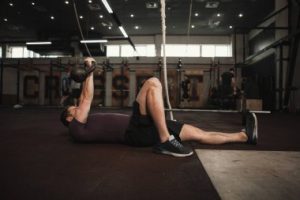
Stability Ball Rollouts
Stability ball rollouts are a powerful core exercise for athletes, providing excellent benefits in terms of strength, stability, and coordination. To perform this exercise, start by kneeling on the floor with a stability ball positioned in front of you. Place your hands on the ball, and as you roll the ball forward, extend your body into a plank position, maintaining a straight line from your head to your heels.
Engage your core muscles throughout the movement to prevent your lower back from sagging. As you roll back to the starting position, squeeze your abdominal muscles to control the motion. For an increased challenge, you can incorporate variations such as performing rollouts with one hand on the ball, which requires greater stability and unilateral strength.
Hanging Leg Raises
Hanging leg raises are an exceptional core exercise for athletes, offering a range of variations to target different aspects of core strength and stability. The basic hanging leg raise involves hanging from a pull-up bar and lifting your legs straight up to a perpendicular position, which engages the lower abdominal muscles and hip flexors. To enhance the challenge and recruit more muscle groups, you can perform straight leg raises with a slight bend in the knees, focusing on controlled movements to maximize muscle engagement and minimize momentum.
Integrated Core Exercises
Barbell Overhead Press
For athletes, maintaining a strong and stable core is essential for optimizing performance and reducing the risk of injury. Integrated core exercises are particularly effective as they engage multiple muscle groups while enhancing core stability. The barbell overhead press is a prime example of such an exercise. When performing this lift, it’s crucial to focus on core engagement throughout the movement. As you press the barbell overhead, your core muscles—comprising the abdominals, obliques, and lower back—must work hard to stabilize your torso and maintain proper posture.
Kettlebell Swings
Kettlebell swings are a powerhouse exercise for athletes aiming to develop a strong and functional core. This dynamic movement emphasizes the hip hinge pattern, which is crucial for athletic performance. When executed properly, kettlebell swings require intense engagement of the core muscles to stabilize the body throughout the swinging motion.
The exercise begins with the hips being pushed back while maintaining a flat back, which loads the posterior chain, including the glutes, hamstrings, and lower back. As the kettlebell is swung upward, the core must work hard to control the movement and prevent excessive arching or rounding of the lower back. This engagement not only enhances core strength but also improves overall stability and power.
Squat Variations
The front squat, for instance, places a significant demand on the core to maintain an upright torso and prevent the body from leaning forward. By holding the barbell in front of the shoulders, the front squat challenges the abdominal muscles and lower back to stabilize the spine throughout the movement. Similarly, the overhead squat is an advanced variation that requires not only core engagement but also shoulder mobility and balance. In this exercise, the barbell is held overhead with arms fully extended, necessitating a robust core to keep the torso aligned and prevent excessive arching of the lower back.
Common Mistakes and How to Avoid Them
Overemphasis on Aesthetics
When training core strength, athletes often fall into the trap of focusing excessively on aesthetic goals, such as developing a “six-pack” rather than functional strength. This emphasis on appearance can lead to an imbalance in core training that neglects crucial aspects of athletic performance. Core exercises should prioritize stability, endurance, and power rather than just superficial muscle definition.
Poor Form and Technique
Major error is poor form and technique, such as allowing the lower back to sag during a plank or using excessive momentum during Russian twists. To avoid these issues, it’s essential to maintain proper alignment and control throughout each exercise. For example, during planks, the body should form a straight line from head to heels, with the core actively engaged to prevent sagging.
Similarly, in Russian twists, it’s important to keep the spine neutral and avoid rounding the back. Paying attention to these details ensures that the exercises target the intended muscle groups effectively while minimizing the risk of strain or injury. By focusing on precise execution and maintaining good form, athletes can maximize the benefits of their core workouts and enhance their overall performance.
Neglecting Lower Back and Posterior Chain
One frequent error is neglecting the lower back and posterior chain, which can lead to imbalances and increased risk of injury. It’s crucial to incorporate exercises that target not only the abdominal muscles but also the lower back, glutes, and hamstrings. A balanced approach ensures that the core muscles are equally strong on the front and back. Effective core exercises for athletes include planks, dead bugs, and bird dogs, which engage multiple muscle groups and promote stability. Additionally, exercises like hip thrusts and back extensions help strengthen the posterior chain, complementing the front core muscles worked by traditional exercises like sit-ups or leg raises.
Ignoring Breathing Techniques
Breathing plays a crucial role in core exercises because it helps stabilize the trunk and maintain intra-abdominal pressure, which is vital for maximizing force and minimizing the risk of injury. For instance, during exercises like planks or leg raises, athletes often hold their breath, which can lead to decreased performance and increased strain on the lower back.
To avoid this mistake, focus on incorporating a consistent breathing pattern: exhale during the exertion phase of the exercise (when you’re pushing or lifting) and inhale during the relaxation phase (when you’re returning to the starting position). Engaging in diaphragmatic breathing—where the abdomen expands as you inhale and contracts as you exhale—can further enhance core engagement and stability.
FAQ: Best Core Exercises for Athletes
Q1. Why is core strength so important for athletes?
A. Core strength is crucial for athletes because it stabilizes the body during dynamic movements, enhances balance, improves posture, and provides a solid foundation for generating power in both upper and lower body activities. A strong core reduces the risk of injuries and boosts overall athletic performance.
Q2. What are some of the best core exercises for athletes?
A. Some of the top core exercises for athletes include:
- Plank Variations: Side planks, forearm planks, and plank with leg lifts target deep core muscles.
- Russian Twists: Focuses on obliques and rotational strength.
- Dead Bugs: Engages the entire core while promoting coordination.
- Hanging Leg Raises: Develops lower abdominal strength.
- Medicine Ball Slams: Combines explosive power with core stability.
Q3. How often should athletes incorporate core exercises into their training?
A. Athletes should aim to include core exercises in their training routine 2-3 times per week. This allows sufficient time for muscle recovery while ensuring consistent improvement in core strength and stability.
Q4. Are there sport-specific core exercises?
A. Yes, different sports may emphasize certain core exercises based on the demands of the sport. For example:
- For runners: Exercises like planks and mountain climbers help maintain a stable posture and improve running form.
- For swimmers: Hollow body holds and flutter kicks enhance core endurance for better stroke efficiency.
- For golfers: Rotational exercises like Russian twists and cable woodchops build the necessary torque for powerful swings.
Q5. Can core exercises help prevent injuries?
A. Absolutely. A strong core supports the spine and pelvis, reducing the strain on other muscles and joints during athletic activities. This stability helps prevent common injuries like lower back pain, groin strains, and hamstring pulls.
Q6. How can beginners start a core training routine?
A. Beginners should start with basic exercises like planks, bridges, and bird-dogs to build foundational strength. Gradually increase intensity and complexity by adding variations, weights, or stability challenges as your core becomes stronger.
Q7. Do core exercises improve athletic performance directly?
A. Yes, a strong core enhances overall athletic performance by allowing athletes to transfer energy efficiently, maintain better posture, and perform movements with greater control and power. This leads to improved speed, agility, and endurance across various sports.
Q8. Should core exercises be done before or after a workout?
A. Core exercises can be done at the start of a workout as part of a warm-up to activate the muscles or at the end to ensure the core is fatigued last, preserving its stability during other exercises. The timing depends on the athlete’s goals and the intensity of the core workout.
Q9. Can core exercises be done daily?
A. While the core can handle frequent training due to its role in stabilizing the body during various activities, it’s essential to allow recovery time. Core exercises can be done daily if the intensity is moderate, but for more intense workouts, aim for 2-3 times per week with rest days in between.
Q10. Are there any common mistakes to avoid when doing core exercises?
A. Common mistakes include:
- Overarching the back: Maintain a neutral spine to avoid unnecessary strain.
- Holding your breath: Breathe steadily to ensure oxygen flow and maintain endurance.
- Rushing through exercises: Focus on slow, controlled movements to engage the muscles fully.
- Neglecting form: Proper form is essential for targeting the right muscles and preventing injury.
Conclusion
In conclusion, incorporating the best core exercises into an athlete’s training regimen is essential for enhancing performance, improving stability, and reducing the risk of injury. Exercises such as planks, Russian twists, and dead bugs target key muscles in the abdominal region, obliques, and lower back, providing a strong foundation for athletic movements. By consistently focusing on core strength, athletes can achieve greater balance, power, and agility, ultimately leading to improved performance in their respective sports. Prioritizing core training is not just about building a strong midsection; it’s about developing the functional strength that supports overall athletic excellence.